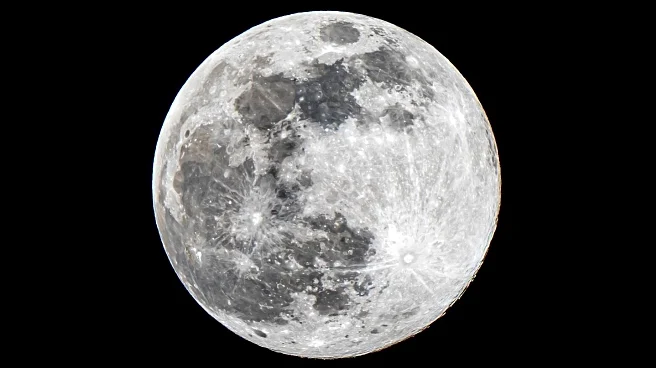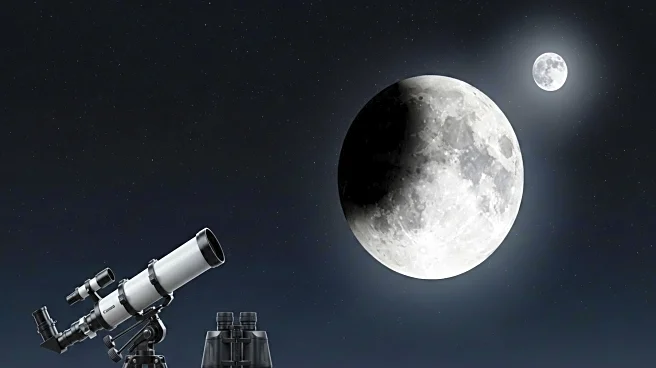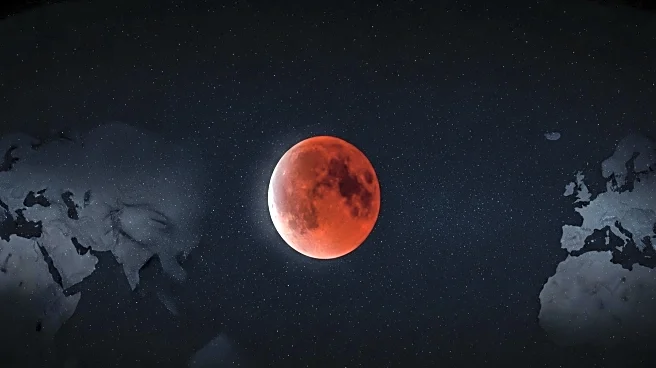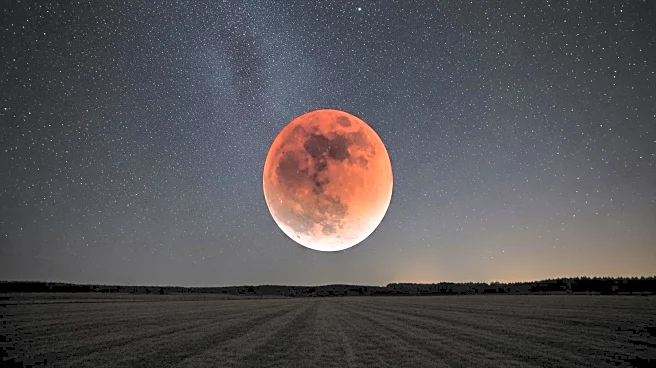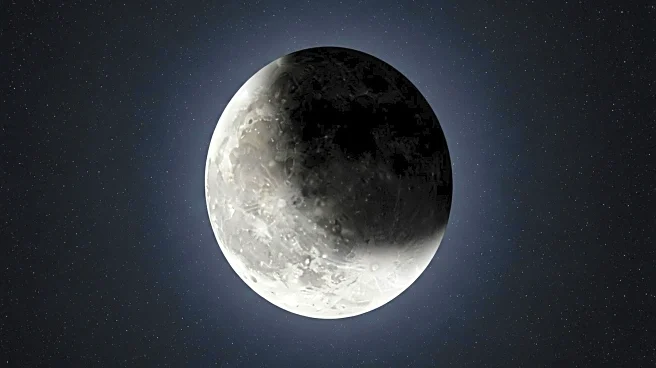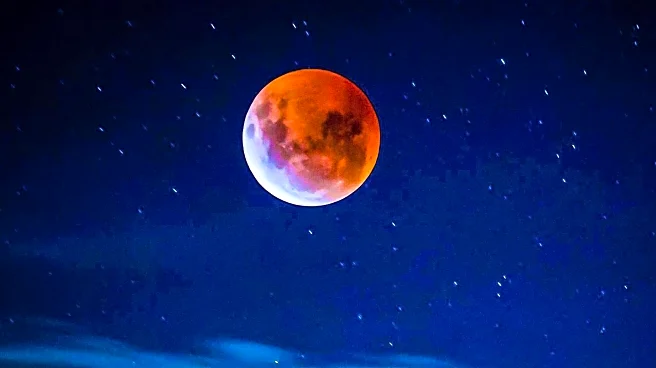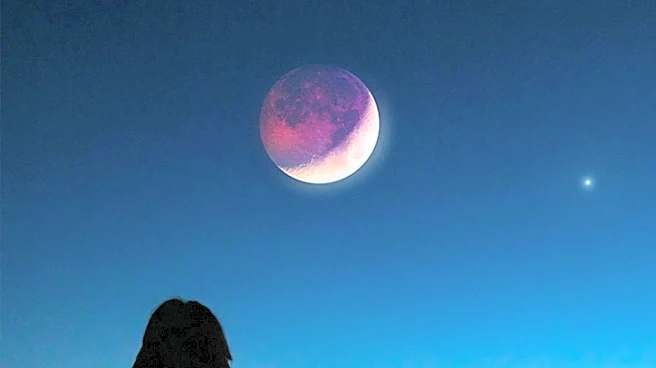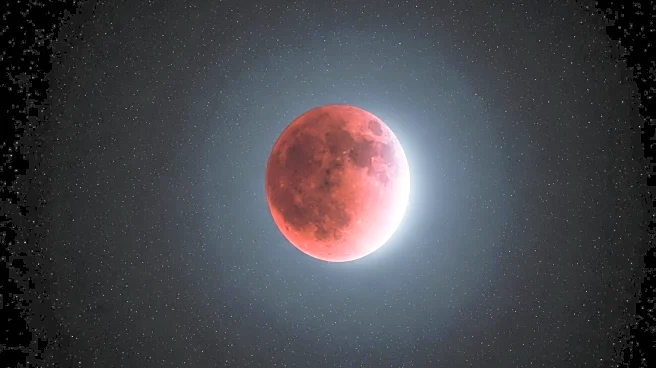What's Happening?
The Full Corn Moon, marking the transition from summer to fall, will rise this weekend. It is named for the corn harvests occurring across the U.S. in September. This year, the full moon coincides with a total lunar eclipse, known as the Blood Moon, which will be visible in parts of the world outside the U.S., including western Australia, eastern Europe, and parts of Asia. During a total lunar eclipse, Earth passes between the moon and sun, causing the moon to glow a deep red due to scattered light from Earth's atmosphere.
Why It's Important?
The occurrence of a Blood Moon during the Full Corn Moon is a rare celestial event that attracts interest from astronomers and skywatchers globally. While the eclipse will not be visible in the U.S., it highlights the interconnectedness of global astronomical phenomena. Such events can inspire interest in astronomy and science education, potentially influencing public engagement with scientific topics.
What's Next?
Skywatchers outside the U.S. can view the Blood Moon via livestreams from various locations. For those in the U.S., the next opportunity to witness a total lunar eclipse will be in March 2026. This anticipation may lead to increased interest in future astronomical events and planning for viewing opportunities.
